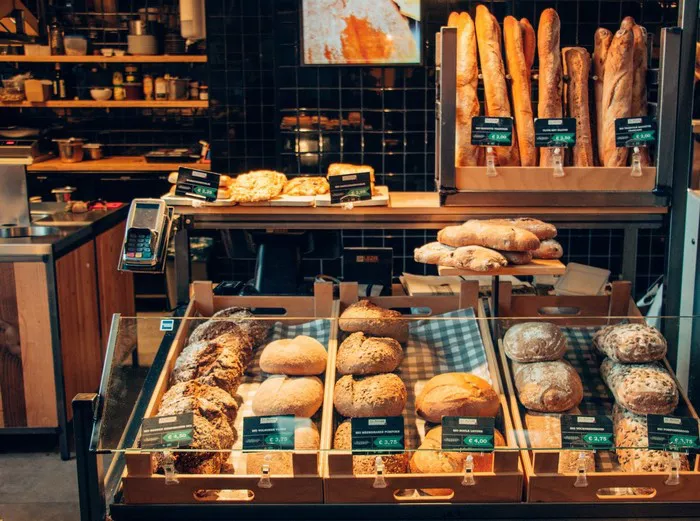Entering the aromatic world of Amma’s Bakery franchise is like stepping into a realm where tradition meets innovation, and every bite tells a story of culinary craftsmanship. Established by Mrs. Meera Rao in 1995, Amma’s Bakery has transcended its humble beginnings to become a beacon of excellence in the bakery industry. With a legacy built on quality ingredients, time-honored recipes, and unparalleled customer service, Amma’s Bakery has garnered a loyal following and earned accolades nationwide. Aspiring entrepreneurs seeking to delve into the realm of bakery franchising are beckoned by the irresistible aroma of success that permeates every corner of the Amma’s Bakery franchise opportunity.
Amma’s Bakery Brand
Amma’s Bakery is a renowned name in the bakery industry, known for its delectable assortment of baked goods and unparalleled customer service. Founded by Mrs. Meera Rao in 1995, Amma’s Bakery has grown from a humble neighborhood bakery to a thriving franchise with multiple locations across the country. The brand’s commitment to quality ingredients, traditional recipes, and warm hospitality has earned it a loyal customer base and widespread recognition.
Amma’s Bakery Franchise Initial Investment
Investing in an Amma’s Bakery franchise offers entrepreneurs a lucrative opportunity to be part of a successful and established brand. However, it’s essential to understand the initial investment required to get started. The initial investment for an Amma’s Bakery franchise typically includes:
1. Franchise Fee: The franchise fee serves as the initial payment to secure the rights to operate under the Amma’s Bakery brand. This fee covers the cost of training, support, and access to proprietary recipes and operational systems.
2. Equipment and Supplies: Purchasing equipment such as ovens, mixers, refrigerators, and display cases is essential for setting up a fully functional bakery. Additionally, franchisees need to invest in high-quality ingredients and packaging supplies to maintain the brand’s standards.
3. Real Estate and Leasehold Improvements: Securing a suitable location for the bakery is crucial for its success. Franchisees may need to invest in leasehold improvements to customize the space according to Amma’s Bakery’s specifications.
4. Marketing and Advertising: Promoting the new bakery through local advertising, signage, and promotional materials is essential for attracting customers and building brand awareness in the community.
5. Working Capital: Franchisees should have sufficient working capital to cover initial operating expenses, such as payroll, utilities, and inventory, until the business becomes profitable.
Amma’s Bakery Franchise Ongoing Expenses
In addition to the initial investment, franchisees must consider the ongoing expenses associated with operating an Amma’s Bakery franchise. These expenses typically include:
1. Royalty Fees: Franchisees are required to pay ongoing royalty fees to the franchisor, usually calculated as a percentage of gross sales. These fees contribute to ongoing support services provided by the franchisor, such as marketing, training, and operational assistance.
2. Rent or Lease Payments: Monthly rent or lease payments for the bakery’s premises constitute a significant portion of ongoing expenses. Franchisees must budget accordingly to ensure timely payments and avoid disruptions to the business.
3. Labor Costs: Payroll expenses for employees, including bakers, sales staff, and administrative personnel, represent a significant ongoing expense for franchisees. Managing labor costs effectively is crucial for maintaining profitability.
4. Cost of Goods Sold (COGS): The cost of ingredients and supplies required to produce baked goods is another ongoing expense for bakery franchisees. Monitoring COGS and optimizing inventory management practices can help control costs and maximize profitability.
5. Utilities and Overhead: Utilities such as electricity, water, and gas, as well as other overhead expenses like insurance, licenses, and permits, contribute to the overall operating costs of the bakery.
Amma’s Bakery Franchise Financial Projections and ROI
Before investing in an Amma’s Bakery franchise, prospective franchisees should conduct thorough financial projections to assess the potential return on investment (ROI). Financial projections typically include:
1. Sales Forecasts: Estimating projected sales based on market research, location demographics, and historical performance of existing Amma’s Bakery locations.
2. Profit and Loss Statement: Developing a comprehensive profit and loss statement to forecast revenues, expenses, and net income over a specified period, typically the first few years of operation.
3. Cash Flow Analysis: Analyzing cash flow projections to ensure that the bakery has sufficient liquidity to cover operating expenses, debt service, and other financial obligations.
4. Break-Even Analysis: Determining the point at which the bakery’s total revenues equal its total expenses, indicating when the business is expected to become profitable.
5. Return on Investment (ROI) Calculation: Calculating the expected ROI based on the initial investment, ongoing expenses, and projected profitability of the bakery franchise over time.
By conducting thorough financial projections and ROI analysis, prospective franchisees can make informed decisions about whether investing in an Amma’s Bakery franchise aligns with their financial goals and objectives.
Conclusion
In conclusion, investing in an Amma’s Bakery franchise offers entrepreneurs a promising opportunity to leverage the brand’s reputation, established systems, and support network to succeed in the bakery industry. However, it’s essential for prospective franchisees to carefully evaluate the initial investment, ongoing expenses, and financial projections to ensure a sound and profitable investment decision. With proper planning, dedication, and adherence to Amma’s Bakery’s high standards of quality and service, franchisees can embark on a rewarding journey as part of this esteemed bakery brand.

